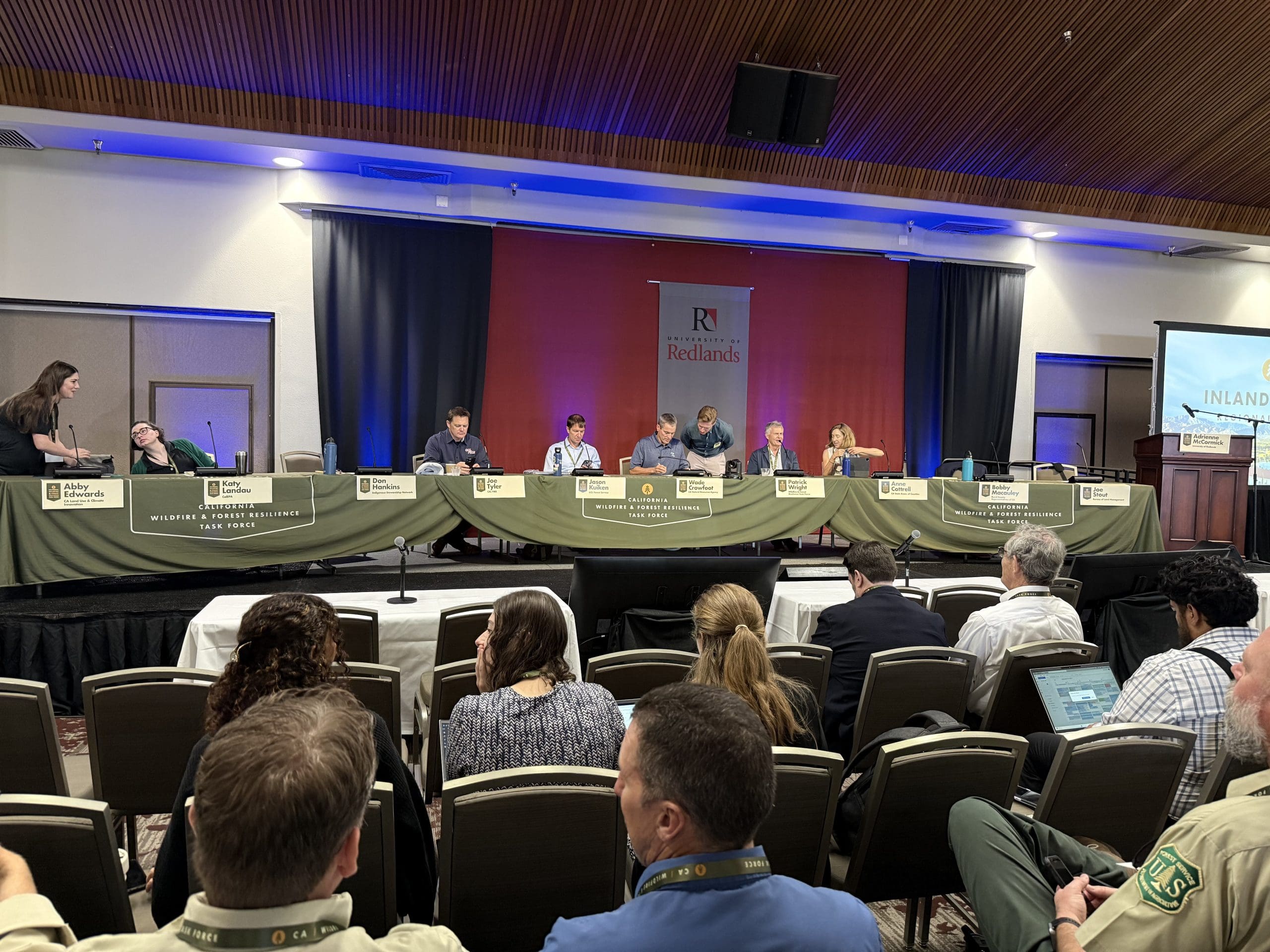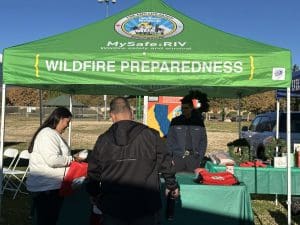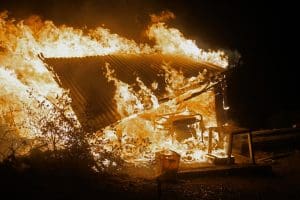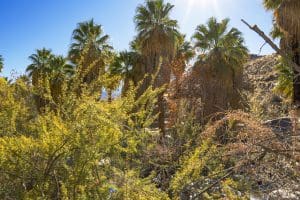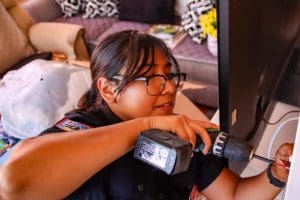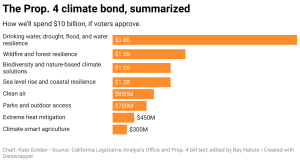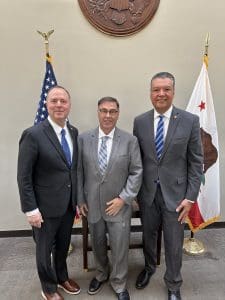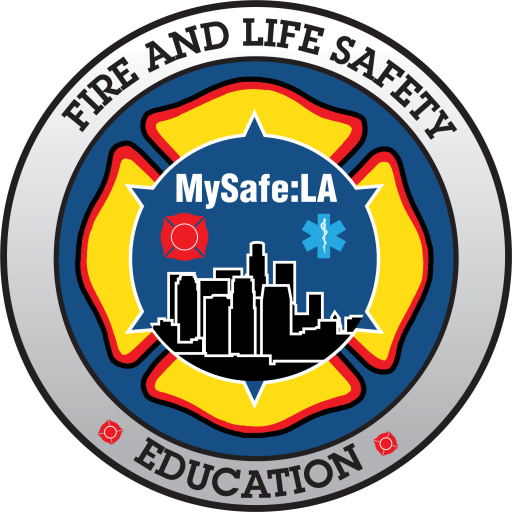Approximately 400 individuals attended the Orton Center at the University of Redlands, with an additional 350 participating remotely, for the California Wildfire and Forest Resilience Task Force Inland Empire Regional Meeting. Organized by the Inland Empire Community Foundation and the Inland Empire Resource Conservation District, the event convened wildfire professionals from both state and local levels to concentrate on a singular vital theme: the distinctive wildfire challenges of Southern California necessitate tailored solutions.
MySafe:Riverside Joins Regional and State Leadership
Among the attendees was David Barrett, Executive Director of MySafe:Riverside, who met with representatives from CAL FIRE, Cal OES, and wildfire coordinators from Kern, Los Angeles, Orange, and Ventura Counties. Together, they discussed the ongoing need to align policy, funding, and mitigation strategies with the realities of Southern California’s landscape.
“The fuels that dominate Southern California — grasses, chaparral, and invasive plants — behave nothing like the dense forests of the north,” Barrett noted after the meeting. “If grant language and eligibility criteria don’t reflect that, then critical resilience projects across the south may be unintentionally left behind.”
Rethinking Funding: “Forest-Centric” Grants Need to Evolve
One of the central topics of the day was reforming state-level grant frameworks that currently prioritize forest management — a model that doesn’t fit much of the Southern California environment.
Speakers emphasized that while programs like CAL FIRE’s Wildfire Prevention Grants and Forest Health initiatives have brought significant benefits to northern regions, counties dominated by non-forest fuels often struggle to qualify for the same level of support.
Participants, including MySafe:Riverside and other county coordinators, advocated for broader definitions of “fuels”and risk-reduction projects — to include chaparral treatments, grassland fuel breaks, and community-focused prevention programs that target ignition reduction and defensible space.
“Southern California burns differently,” said one regional representative. “We need funding models that recognize that difference — or we’ll always be responding instead of preventing.”
Highlights from the Inland Empire Regional Agenda
1. Wildfire Resilience in the Inland Empire: Collaborative Efforts Producing Results
State, federal, and nonprofit partners proudly shared their progress on fuel treatments, public education, and cross-jurisdiction coordination, all of which contributed to reducing wildfire impacts during the 2024 fire season.
The presentations highlighted exciting multi-agency prescribed burn projects, defensible space enforcement programs, and community evacuation planning efforts that truly boosted local preparedness.
2. Southern California’s Pathway to Resilience
Regional leaders from CAL FIRE, county OES divisions, and nonprofit coalitions shared inspiring stories of how cooperative agreements and data-sharing partnerships are turning their strategies into real, impactful results. This “roadmap’ is all about safeguarding communities, preventing wildfires, and restoring damaged landscapes — specially designed for the beautiful chaparral terrain of the Inland Empire.
3. Tracking, Funding, and Measuring Progress
A key shift discussed was moving from “acres treated” to “outcomes achieved.”
Instead of just looking at land cleared or burned as success, new approaches focus on community safety, reducing ignition, and helping ecosystems recover — all important aspects that really connect with Southern California’s fire ecology. Speakers also shared exciting new funding ideas, like partnerships between state agencies and regional nonprofits, along with expanding wildfire resilience tracking to include urban-edge measures — such as ember intrusion risk and maintaining defensible space. These steps make the efforts even more impactful and better tailored to local needs.
Southern California: A Distinct Wildfire Reality
Throughout the meeting, one message was clear: Southern California’s wildfire story is not the same as Northern California’s.
The Inland Empire’s mix of desert valleys, foothill communities, and urban sprawl creates a very different set of vulnerabilities.
Unlike the forested Sierras or coastal redwoods, Riverside and neighboring counties face fast-moving, wind-driven fires fueled by grass and brush, with human ignition sources as a primary cause.
Programs that focus narrowly on “forest health” often miss the broader need to protect homes, infrastructure, and human life where wildland and community meet.
MySafe:Riverside’s Role Moving Forward
Following the Redlands meeting, MySafe:Riverside reaffirmed its commitment to education, prevention, and collaboration as pillars of wildfire resilience.
The organization continues to work with CAL FIRE, Cal OES, and local agencies to:
- Expand community wildfire preparedness training,
- Strengthen public awareness on evacuation readiness and home hardening,
- Advocate for inclusive funding models that reflect the reality of Southern California’s fuels and topography.
“Resilience begins with understanding our landscape,” Barrett emphasized. “If we tailor resources to the way Southern California burns, we can save homes — and lives.”
Want to Learn More?
If you missed the event, the California Wildfire and Forest Resilience Task Force has posted video recordings of the Inland Empire Regional Meeting along with the full agenda and presentation materials.
Visit wildfiretaskforce.ca.gov for the latest resources, or follow MySafe:Riverside for local updates and community workshops focused on wildfire prevention and response.

